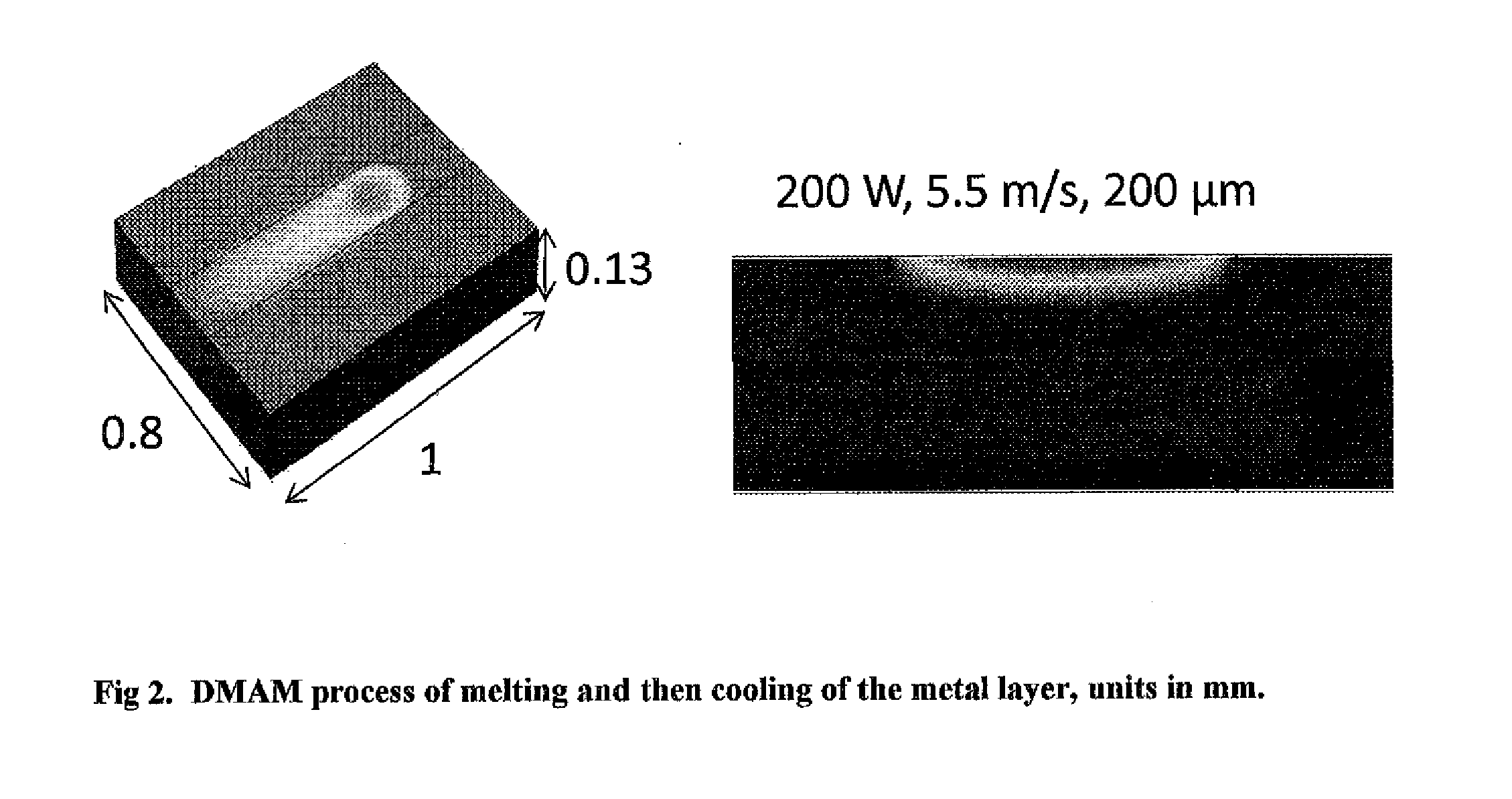Method for Efficiently Predicting the Quality of Additively Manufactured Metal Products
a technology of additive manufacturing and efficient prediction, applied in the direction of computation using non-denominational number representation, design optimisation/simulation, instruments, etc., can solve the problem achieve the effect of very rapid production simulation
- Summary
- Abstract
- Description
- Claims
- Application Information
AI Technical Summary
Benefits of technology
Problems solved by technology
Method used
Image
Examples
Embodiment Construction
Overall Architect
[0018]This invention separates the global modeling and local modeling by decoupling their relationship through a database. The global model uses large computational meshes and large time steps, while the local model uses very small computational meshes and very short time steps. In between, a database is used to provide the pre-calculated local results to the global evaluation. In contrast, conventionally known to those skilled in the art, the global and local models are conducted simultaneously that the overall number of meshes is exceedingly huge to satisfy hundreds layers, tens traces each layer, tens point heat source diameter in each trace, tens of meshes around each point heat source area, and to perform both thermal and stress analyses together. As a result, the computational time is extremely long. In fact, this invention is able to complete a simulation in minutes as compared with the conventional method of taking weeks or months.
[0019]This invention allows...
PUM
 Login to View More
Login to View More Abstract
Description
Claims
Application Information
 Login to View More
Login to View More - R&D
- Intellectual Property
- Life Sciences
- Materials
- Tech Scout
- Unparalleled Data Quality
- Higher Quality Content
- 60% Fewer Hallucinations
Browse by: Latest US Patents, China's latest patents, Technical Efficacy Thesaurus, Application Domain, Technology Topic, Popular Technical Reports.
© 2025 PatSnap. All rights reserved.Legal|Privacy policy|Modern Slavery Act Transparency Statement|Sitemap|About US| Contact US: help@patsnap.com



